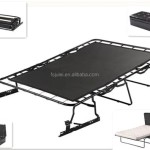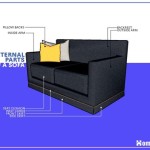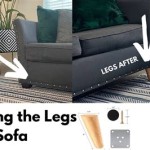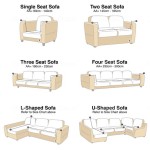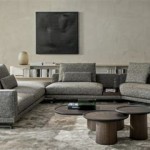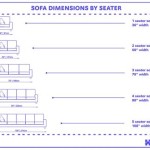One Seater Sofa Dimensions: A Comprehensive Guide
Choosing the perfect one-seater sofa involves careful consideration of various factors, and dimensions play a crucial role. Understanding the standard and varied measurements ensures a comfortable fit within a given space and caters to individual preferences. This guide provides an in-depth exploration of one-seater sofa dimensions, covering key aspects to consider when making a purchase.
Standard Dimensions: While variations exist depending on design and manufacturer, a typical one-seater sofa falls within a specific range. Generally, the width ranges from 30 to 40 inches, the depth from 30 to 40 inches, and the height from 30 to 36 inches. These dimensions provide a comfortable seating space for a single person while maintaining a manageable footprint.
Width Considerations: The width of a one-seater sofa directly impacts the available seating space. A narrower width, around 30 inches, suits smaller spaces or individuals who prefer a snug fit. Wider options, closer to 40 inches or more, provide greater comfort for larger individuals or those who prefer more room to move. Consider the intended use and available space when selecting the width.
Depth Dimensions: The depth of the sofa affects seating posture and comfort. A shallower depth, around 30 inches, promotes a more upright posture, suitable for formal settings or smaller rooms. Deeper depths, exceeding 35 inches, allow for a more relaxed, lounging position. Evaluating individual comfort preferences and intended use is crucial when considering depth.
Height Variations: The height of a one-seater sofa encompasses both the seat height and the overall height, including the backrest. Seat height typically ranges from 17 to 20 inches, influencing ease of sitting down and standing up. Overall height impacts the visual presence of the sofa within a room. Lower heights create a more grounded feel, while higher backrests offer greater head and neck support.
Impact of Style on Dimensions: Design style significantly influences the dimensions of a one-seater sofa. Modern or minimalist sofas often feature clean lines and compact dimensions, ideal for smaller spaces. Traditional or oversized sofas tend to have larger dimensions, offering more generous seating and a grander presence. Consider the existing décor and desired aesthetic when selecting a style and its associated dimensions.
Measuring for the Right Fit: Before purchasing a one-seater sofa, accurately measure the available space. Consider not only the footprint of the sofa itself but also the surrounding area required for comfortable movement and access. Ensure adequate clearance for doorways and walkways. Visualizing the sofa within the room using measurements helps prevent sizing issues.
Accounting for Armrests and Backrest: Armrests and backrests contribute significantly to the overall dimensions and comfort of a one-seater sofa. Armrests can vary in width and style, affecting the total width of the piece. Consider the desired level of arm support and the impact on overall size. Backrest height and angle influence comfort and posture. Higher backrests provide more support, while angled backrests offer a more relaxed seating experience.
Material and Cushion Considerations: The materials used in the sofa's construction and cushions also impact dimensions and comfort. Thick cushioning can add to the overall depth and height of the sofa. The type of material, such as foam, down, or feathers, affects the firmness and support. Consider individual preferences and desired comfort levels when selecting materials and cushions.
Special Considerations for Specific Spaces: When selecting a one-seater sofa for specific spaces, additional considerations apply. For small apartments or studios, compact and space-saving designs are essential. Consider sofas with slim profiles and minimal armrests. For larger living rooms or bedrooms, larger, more luxurious one-seater sofas can create a focal point and provide ample comfort. The intended use and available space should dictate the sofa's dimensions.
Beyond Standard Dimensions: While standard dimensions provide a general guideline, customization options often exist. Some manufacturers offer bespoke or made-to-order sofas, allowing individuals to specify exact dimensions. This option caters to specific space requirements and individual preferences, ensuring a perfect fit. Exploring customization options provides greater flexibility in achieving the desired dimensions.
Ergonomic Considerations: Ergonomics play a crucial role in comfort and long-term well-being. When selecting a one-seater sofa, consider the height and depth in relation to individual body proportions. Ensure adequate lumbar support and a comfortable seating posture. Prioritizing ergonomic features enhances comfort and reduces the risk of musculoskeletal issues.
Considering Future Needs: When investing in a one-seater sofa, consider potential future needs. If space constraints might change or if lifestyle adjustments are anticipated, selecting a sofa with adaptable dimensions or modular design offers greater flexibility. Thinking ahead ensures that the sofa remains a functional and comfortable piece of furniture for years to come.

Leah Fabric 1 Seater Sofa Sofaandbed Sg

Nofa 1 Seater Sofa

Gummy Sofa Living Room Furniture Sg Sofas Singapore Bedandbasics

Mr Big Modular Sofa Living Room Furniture Sg Sofas Singapore Bedandbasics

Garth 1 Seater Sofa Maxcoil Mattresses Bed Frames And Sofas Singapore

Fabric Sofa

Nill Astonic 1 Seater Fabric Sofa Beige Furniture

Plaza Single Seater Lounge Dimension I Office Furniture Sydney Melbourne Brisbane

Cuba Single Seat Birch Wood Sofa Bed Futon Company

Clea 1 Seater Sofa


